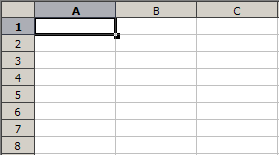
How Do You Publish?

(Photo: USPS)
Last week in my craft class, one of the first-year students asked everyone in the class how we submit our work to places and get published. There wasn’t just one answer, and there was quite a bit of variety among the answers he received, so it felt like something worth writing up and sharing for any potential MFA candidates.
I’m going to avoid going too deep into the process of tracking submissions so this blog doesn’t just read like shop talk with writers, but the first thing you should do is develop a system of some kind to track your submissions. There are services you can go through online that can help with that a little, but it’s a good idea to have a spreadsheet of some kind (Excel, Google Sheets, whatever) to track your submissions and know where you have submitted poems. This isn’t just for the sake of organization; knowing where you’ve sent your poems makes it immeasurably easier to withdraw accepted work from submissions to Journals A, B, and C if Journal D wants to publish it.

Filling out your spreadsheet (Courtesy M. W. Toews)
The hardest step for quite a few early writers is simply finding out where they can publish their work and if those publications are legitimate or if they will put your poem on a dark corner of their website and not even tell you when it goes live. One good way to scout potential publications is to read the acknowledgements section of books of poetry you’ve enjoyed, as they typically list publications where those poems were printed before finding a home in that book. Make a list of them and check out who they have published; see if that’s company you’d like to be in and search for when they accept submissions (and how they accept them).
While it’s not perfect (and it costs money), Duotrope is one of the easiest ways to search literary magazines, see their reported acceptance rates, and track your submissions. There’s a free trial that should give you enough time to get used to their somewhat clunky interface, and then it’s just a matter of sending your work out to the magazines that seem to fit.
You could also pick up long-established literary magazines like Columbia Poetry Review or Crab Orchard Review to get an idea of whether or not you think your writing could find a home there.
After you’ve targeted some magazines, it’s time to start assembling your poems into batches for submissions. The majority of publications accept online submissions either through email or a platform called Submittable, though you will still find some magazines that accept and encourage print submissions.

Submissions don’t stop for snow (US Public Domain)
Whether you use Submittable, email, or snail mail to send your work to a publication, you should be sure to send them work that corresponds to their submission guidelines. If they say “no more than 5 pages, no more than 1 poem per page,” that doesn’t mean you can send five two-page poems or fit ten short poems on five pages; there are magazines that will reject you outright for an inability to follow directions. Some will insist on a header with the poet’s name while others (particularly contests) will often disqualify your submission if your name is on the same page as a poem. The best thing you can do is create a new document for each submission, insert the poems you are submitting, and then adjust fonts and formatting as necessary.
And remember, if you haven’t heard back from a publication after a significant time has passed, it’s okay to give them a gentle reminder.
